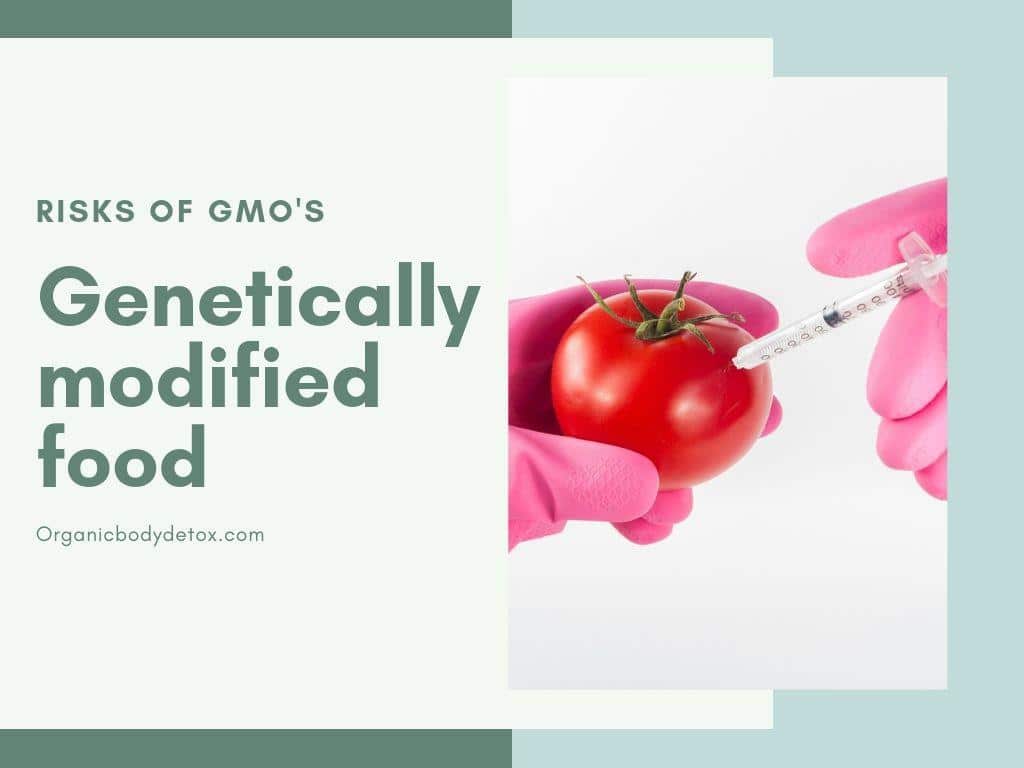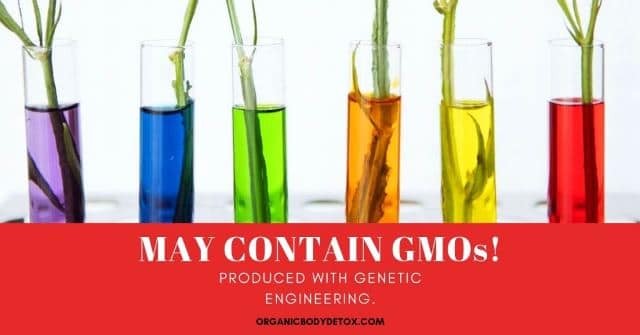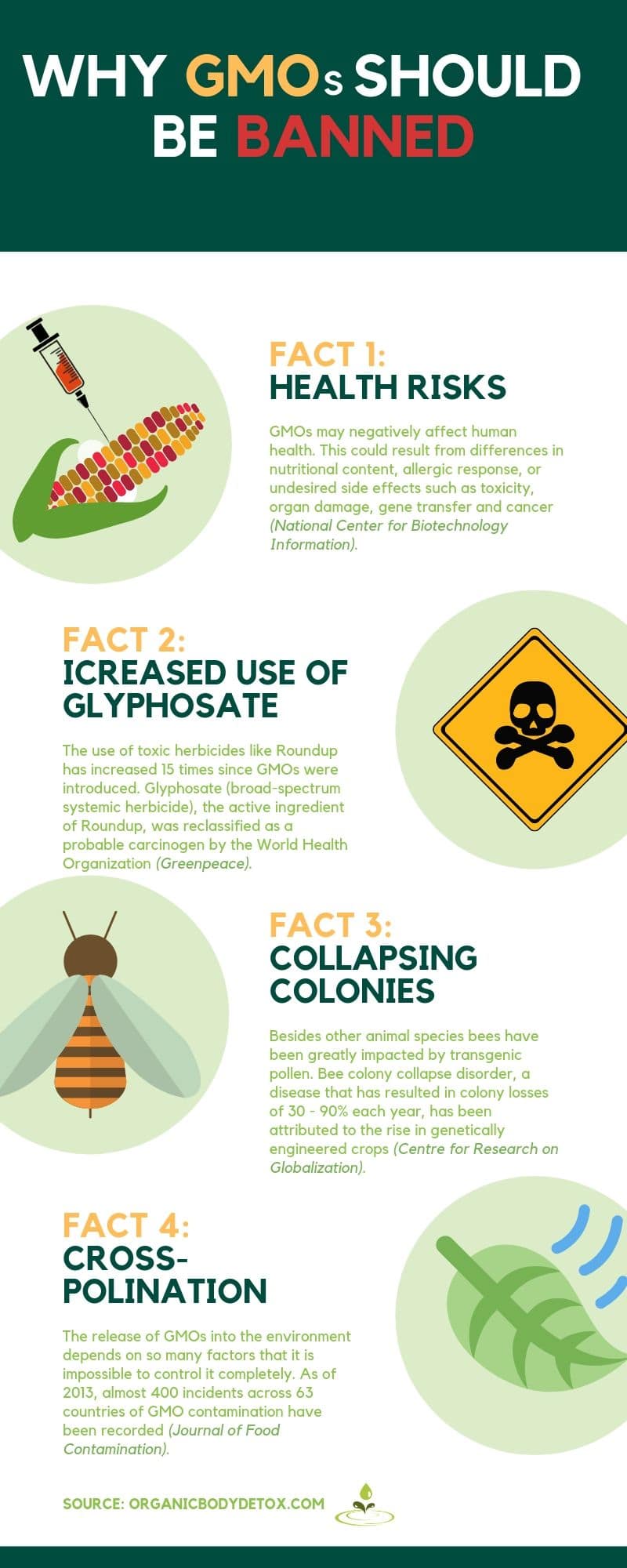GMO risks and benefits
Walking through the various aisles of the grocery store can be a very mundane experience, but for others, it can be full of difficult decisions. Those people may be aware of the possible effects that GMO foods can have. Searching for produce that isn’t genetically modified but also isn’t crazy expensive can be a tricky situation. But is it even necessary? Are GMO’s safe or not? Do you want the answer to those questions and find out what disadvantages of GMO foods are? Well…it might not be as clear as you’d like.

What are GMOs
So you might be unaware of what a GMO is, that’s ok. GMO stands for Genetically Modified Organism and can be any living thing that has had a specific gene changed by scientists. Usually, this is for a specific purpose like making a plant become more insect resistant.
The exact process of gene editing can be somewhat complex, but the general idea is that scientists take a gene from one organism and put it in the DNA of another organism. This second organism should now have a specific property that it did not have before. This is an incredible use of science, but GMOs are used to create food that everyone eats, specifically plants.
Many find themselves unsure about the safety of GMOs and ask the question: Shouldn’t people eat the same plants that we have been eating for centuries if not millennia?
Are GMOs safe?
So what harm is being done by GMOs, the simple answer is….none. At least none that have been seen. There is no evidence that says GMOs are bad, many critics say there are no long term studies on humans and so they pose a big risk.
So those who are concerned have a right to be. I mean you are changing the “code” that a being operates with to something it wasn’t before. That might be fine for computers, but living things are more complex and sensitive to this kind of changes.
What about health risks?
Scientists generally believe that allergies are the only health disadvantages of GMO food consumption. Most of the allergies are caused by specific proteins in milk, eggs, soybeans, fish, wheat, nuts, etc. The genes of these proteins, incorporated in foods that normally do not pose any risk, can trigger an allergy.
Genetically modified plants could therefore produce certain substances that could cause allergies in humans. Many scientists argue that the number of food hypersensitivity cases are increasing, as well as the frequency of celiac disease.
Celiac disease is a chronic small intestine disorder caused by gluten intolerance, a protein contained in particular foods. As a possible cause for this immune response in the body, genetically modified foods are mentioned.
However, there are plenty of studies on GMOs and there is no difference between eating them versus more traditionally grown food. The few studies that have shown adverse results have been found to have cherry-picked data and could not be replicated by others.
This isn’t to say they are perfect, they pose some big risks which are multiplied greatly if we eventually find out they are actually bad to ingest.

Other disadvantages of GMO foods
Up to 59% of people don’t believe that GMOs are safe to eat, these people usually aren’t fully aware of the situation, but let’s pretend that GMOs can be dangerous to eat. Well, then there are some serious problems that exist, such as, the lack of proper labeling in the United States.

- The FDA does not require that foods with genetically modified ingredients be labeled. This is different from most other developed countries like the European Union and Japan which is a cause for concern if you are trying to avoid eating GMOs. The Non-GMO Project is helping to alleviate this problem by labeling as many foods that are GMO-free as they can.
- The foods that are used to make many other foods called core foods are often genetically modified. These include corn, cotton, sugarbeets, and soybeans which can be up to 90% genetically modified. As I mentioned earlier, these foods are often used to make other foods that can increase the difficulty to find foods that are not GMO at the grocery store.
- These core foods are used heavily when making feed for livestock and other animals that are bred to be eaten such as beef and milk, as well as chicken and eggs, even fish. The concern here is that if animals ingest GMOs then they are affected by GMOs and so are unsafe to eat.
- When a farmer grows GMOs there is the likely possibility that the plants can be pollinated just like normal non-GMO plants. This can spread the genes of the genetically modified plant to nearby crops that have not been modified. Thereby reducing the population of traditional crops, possibly without anybody even noticing. Over time it could eliminate traditional crops altogether.
If GMOs are considered safe, which most scientists say they are, then everything is alright, right?
WRONG!

GMOs are often patented by large corporations that can restrict farmers that grow their crops. Let’s say you’re a farmer, you want to grow some crops that don’t need a lot of herbicide or other pesticide and so you decide to grow GMOs.
The corporation that owns the GMOs you end up growing requires you to only grow their crops and to properly protect them from being contaminated by other crops. This makes sense at first but you quickly realize that you are very limited and are now relying fully on this large corporation who can easily stop working with you.
Most of the reason you decided to grow GMOs was to limit the use of herbicides but the weeds on your farm have adapted to the genetic modifications and so need strong herbicides to kill them anyway. This is a very worrying fact and an important reason why we should seriously consider all the disadvantages of GMO foods.
So what do GMOs have going for them then?
A lot, most of the effects are most beneficial to those in developing countries who cannot afford certain foods. They can be modified to have more vitamins or nutrients inside them which means people do not need to eat as much food which can greatly reduce costs.
GMOs can be made to last longer so that apple picked half a world away won’t go bad while getting to you. This helps get certain crops to a part of the world that wouldn’t have access to that crop since it can only be grown in certain other regions of the world.
Genetically modified crops can even have larger yields when compared to traditional crops. This saves space and improves farmer’s profits which is good for farmers and for the world’s increasing population. In case you are unaware, all crops need certain climates to grow and they are almost always different for other crops.

You can’t grow watermelons anywhere, at least not very effectively. But seeds can be modified to grow in more extreme environments that might not get much rainfall or perhaps too much rainfall. Really, they can be changed to adapt to pretty much any region.
They become a hardier plant because of this and this tolerance of conditions translates to less work required to grow the foods. Meaning farmers do not have to work the soil as hard as they used to, thereby reducing the amount of exhaust from heavy farming equipment that is common on modern farms. The fewer chemicals farmers use helps the soil as well, so that’s a positive environmental impact.
Did you forget about how they are disease resistant? What about insect resistant? Weed resistant? Did you know that genetically modified crops can use significantly less water than traditional crops?
(Speaking of watermelons, many wonder whether seedless watermelons are genetically modified. No need to worry about, seedless watermelons are hybrids, safe and delicious in every way.)
Final thoughts: Frankenstein science – Disadvantages of GMO foods
I’m not a farmer, but if I was then I’d be growing GMOs, with extreme caution of course, and I’m pretty sure that people two hundred years ago who starved because of such problems would have grown GMOs too if they could. That being said, genetic engineering should be only used for the purpose of improving crisis situations, protecting the environment, animals and human health.
Maybe you disagree or you aren’t aware of the environmental benefits that GMOs can have. That’s cool, you do what you think is best. To make the right decisions about GMOs, remember the facts and take into consideration all the proven and possible disadvantages/benefits of GMO foods and keep up with the latest medical research, studies and scientific data.
